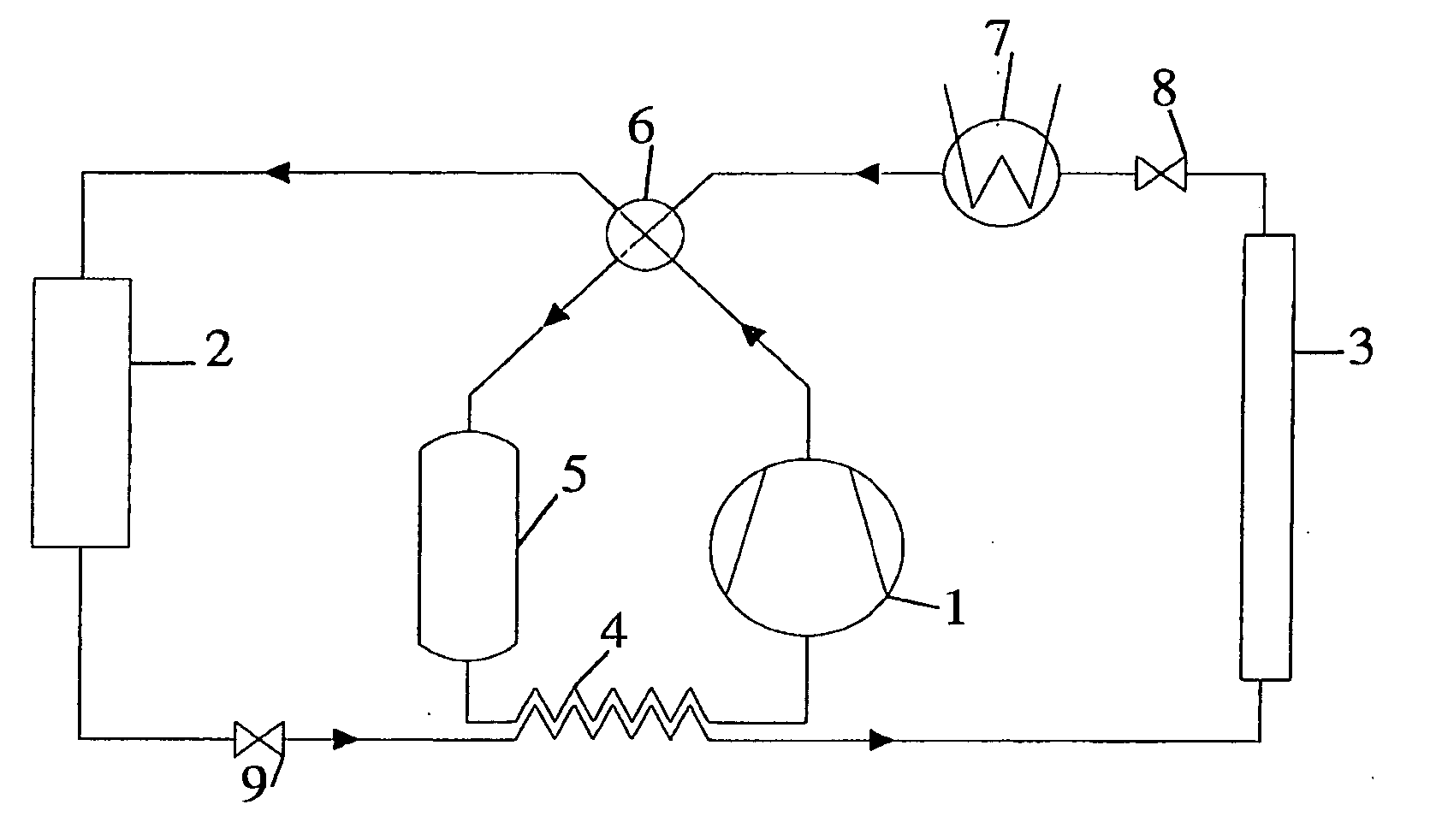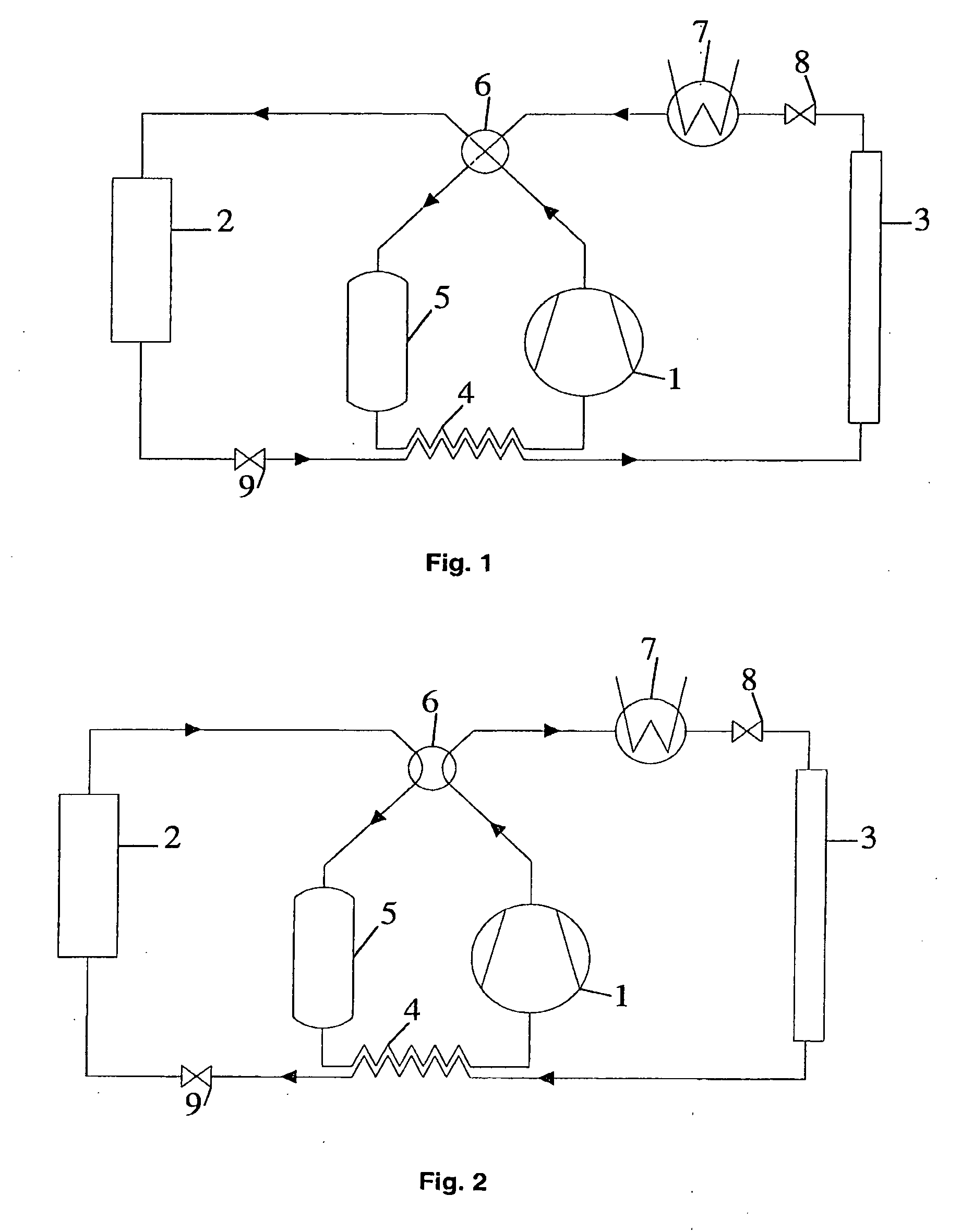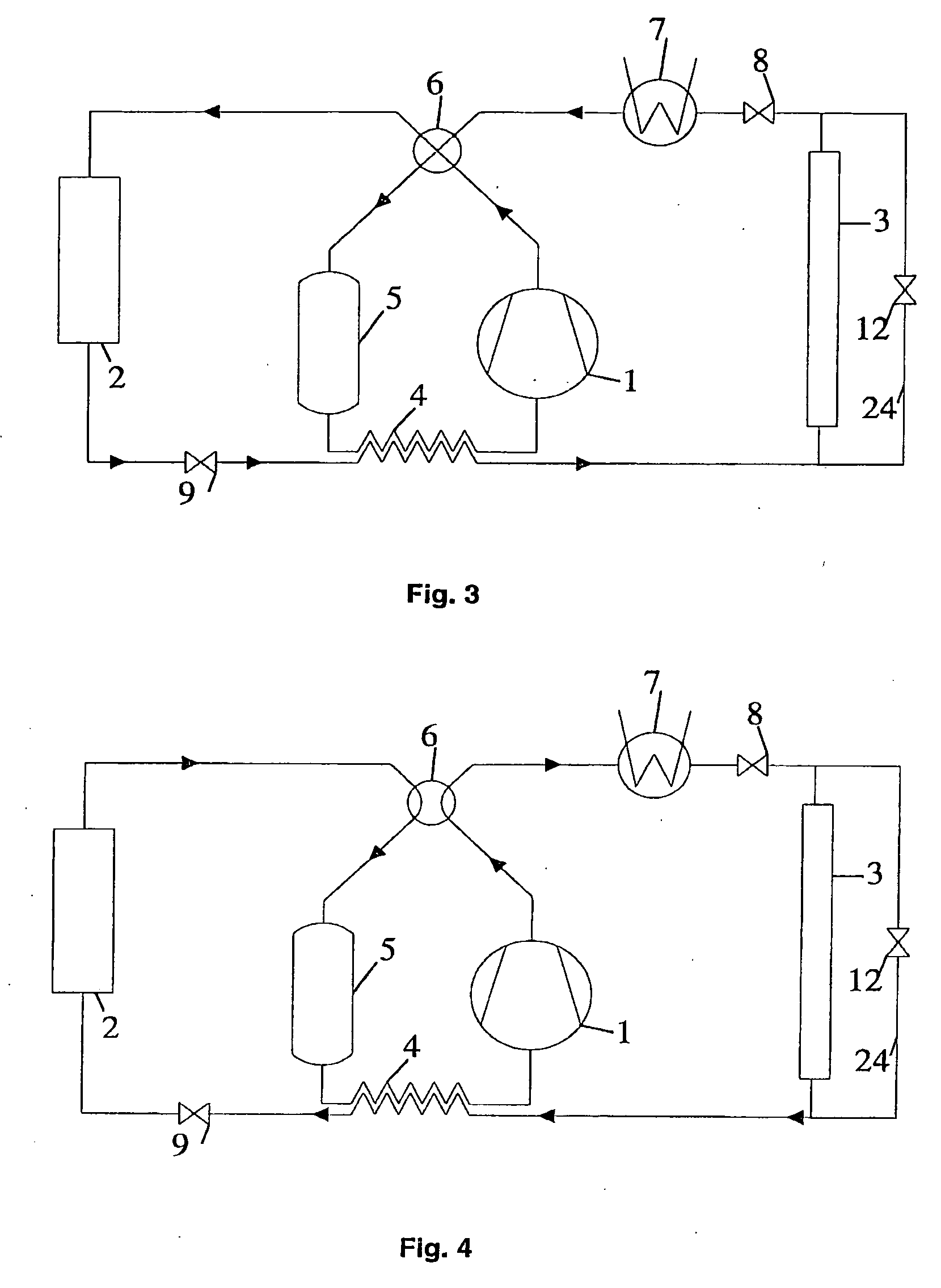Vapor compression system for heating and cooling of vehicles
a technology of vapor compression system and vehicle, which is applied in the direction of heating types, lighting and heating apparatus, instruments, etc., can solve the problems of large exhaust/refrigerant heat exchanger size, corrosion problems that may occur on the exhaust, and oil decomposition in the exhaust gas heat recovery heat exchanger, so as to reduce the heat load and accelerate the engine heating
- Summary
- Abstract
- Description
- Claims
- Application Information
AI Technical Summary
Benefits of technology
Problems solved by technology
Method used
Image
Examples
first embodiment
1. FIRST EMBODIMENT
[0047] The First embodiment of the present invention for a reversible vapor compression cycle is shown schematically in FIG. 1 in heat pump mode and FIG. 2 for comfort cooling operation. In accordance with the present invention, the device includes a compressor 1, a flow-reversing device 6, an interior heat exchanger 2, a multi-function expansion device 9, an internal heat exchanger 4, an exterior heat exchanger 3, another multi-function expansion device 8, an auxiliary heat exchanger 7 and an accumulator 5. The system operation in heat pump and cooling mode is described with reference to FIG. 1 and FIG. 2 respectively.
Heat Pump Operation (FIG. 1):
[0048] When the system is running as heat pump, the compressed refrigerant after the compressor flows first through a flow-reversing device 6 that is in heating mode. The refrigerant then enters the interior heat exchanger 2, giving off heat to the heat sink (cabin / passenger compartment air, or secondary fluid) before...
second embodiment
2. SECOND EMBODIMENT
[0050] The second embodiment is shown schematically in FIG. 3 and FIG. 4 in heat pump and cooling mode respectively. The main difference between this embodiment and the First embodiment is the presence of a bypass conduit 24 providing a valve 12 which add the option to bypass the exterior heat exchanger 3 if needed.
third embodiment
3. THIRD EMBODIMENT
[0051]FIG. 5 and FIG. 6 show schematic representation of this embodiment in heat pump and cooling mode operation respectively. Compared to the First embodiment, it has an additional conduit and flow-diverting device 19 for bypassing the internal heat exchanger 4. It is also possible to provide a bypass conduit 25 in order to bypass the exterior heat exchanger 3 as in the Second embodiment. Under very low ambient (heat source) temperature (low evaporation temperature), it might be desirable to avoid too high discharge temperature. In such cases, the refrigerant after the multi-function expansion device 9 is totally or partially diverted by the flow-diverting device 19 in order to bypass the internal heat exchanger 4. The reversing process from heating mode to cooling mode operation is performed by using the two multi-function expansion devices 8 and 9 as described in the First embodiment.
PUM
 Login to View More
Login to View More Abstract
Description
Claims
Application Information
 Login to View More
Login to View More - R&D
- Intellectual Property
- Life Sciences
- Materials
- Tech Scout
- Unparalleled Data Quality
- Higher Quality Content
- 60% Fewer Hallucinations
Browse by: Latest US Patents, China's latest patents, Technical Efficacy Thesaurus, Application Domain, Technology Topic, Popular Technical Reports.
© 2025 PatSnap. All rights reserved.Legal|Privacy policy|Modern Slavery Act Transparency Statement|Sitemap|About US| Contact US: help@patsnap.com



